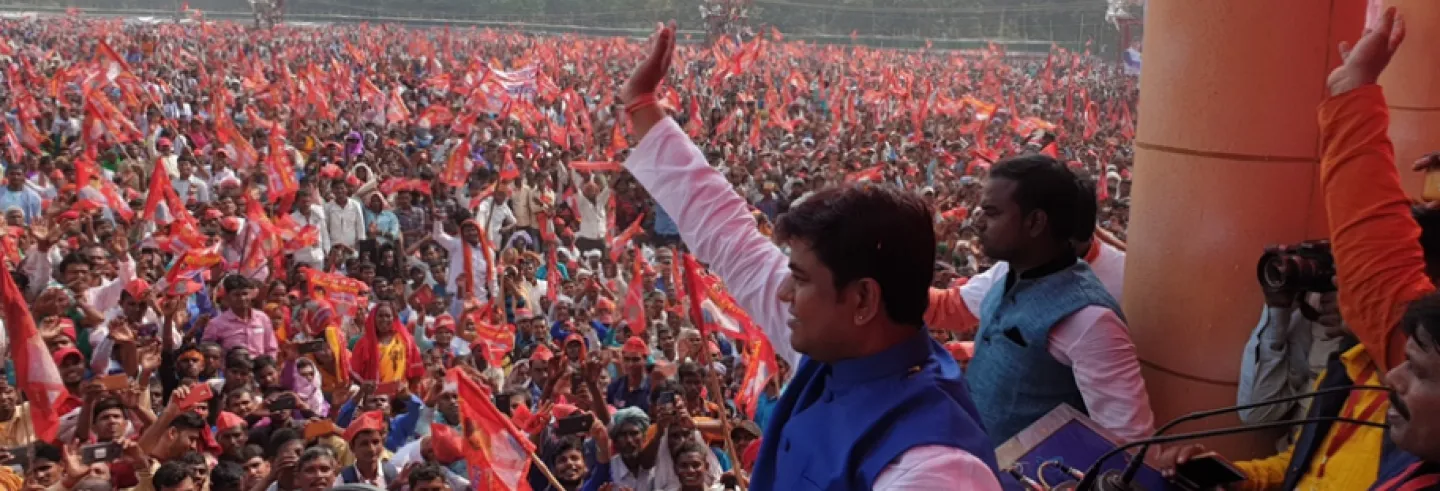Political observers of Bihar are aware of the importance that Patna’s Gandhi Maidan, the large open space of lush green grass cover in the heart of the city, has among the political class. From Jayprakash Narayan’s call for “Total Revolution” (sampoorna kranti) to Lalu Yadav’s call for Yadavs to occupy the political landscape of Bihar in 1990 to Nitish Kumar’s Kurmi “Chetna” rally in mid 1994 to even Narendra Modi’s “Hunkar" rally in 2013, it is imperative for every political leader who wishes to leave his mark on Bihar to prove one’s mettle by filling Gandhi Maidan with his or her supporters.
The proliferation of caste-based parties on Bihar’s political horizon in the post-Mandal era has seen a parallel rise in Gandhi Maidan’s political prominence; the maidan witnessed as many as 40 caste-based political rallies between 1990 and 1993-94 (Choudhary and Srikant 2001, 252). Successfully filling the ground with a sea of supporters is a symbol of one’s “arrival” in Bihar.
Mukesh Sahni, the leader of the newly formed Vikassheel Insaan Party or VIP, knows this fact only too well. It was on the morning of 4 September 2015 that I met him for the first time during a padyatra outside the Gandhi Maidan that had been organised by his Nishad Vikas Sangh. The padyatra was supposed to start from Gandhi Maidan and culminate at the Governor’s House where Sahni, who likes to call himself the “Son of Mallah”, was to meet the then Governor Ramnath Kovind, and along with his supporters put forth the demand for the inclusion of the Nishad community in the Scheduled Tribes (ST)/Scheduled Castes (SC) category.
Comprising about 8% of the total population of Bihar, the Nishads are a largely riverine caste group of around 22 sub-castes or jaatis, who come from the Mallah, Godhi, Kevat, Noniya, Sahni and other sub-castes which are involved in river-related occupations as boatmen, fishermen, net weavers, salt makers and so on. The community with around 22 sub-castes forms a large part of the 130 odd jaatis which together make up the Extremely Backward Caste (EBC) population, which in itself comprises about 32% of Bihar’s population.
Mukesh Sahni’s VIP is the latest entrant to the club of regional caste-based parties which have been proliferating in India, especially in the Hindi heartland states of Uttar Pradesh and Bihar.
A young and flashy individual, who had brought back to Bihar the riches he earned in Mumbai, Sahni looked the opposite of the image of a career politician as popularised in public perception. Although clad in a kurta pyjama, he had a crisply cut waist coat of a designer label, some accompanying gold chains and a shiny earring on his right ear, bringing out the bling factor in his personality. The blonde highlights in his hair, albeit out of place in Bihar, were a token of his assertive rich self from Mumbai.
By thronging the streets of Patna with supporters demanding reservation, Sahni had hoped to announce a spectacular arrival in Bihar’s politics. However, the padyatra was shoddily organised and soon descended into chaos when police denied them entry into prohibited zones near the Governor’s House. Violent clashes between the police and the marchers left around 50 people injured (The Statesman 2015). From the confines of his suite in the Maurya Hotel, which also doubled up as his office, Sahni was clearly unhappy with the way his “arrival” had taken shape on 4 September 2015.
Fast forward to 4 November 2018, almost three years after that chaotic and violent September morning. The venue was Gandhi Maidan once again, and the actors involved were once again, Mukesh Sahni and his supporters from the Nishad community. The plan this time was to formally announce his arrival on the political horizon by launching a political party for the Nishad community.
Sahni and his team had utilised their experience of being set designers in Bollywood to create the perfect stage for the launch - a replica of Parliament House in the middle of Patna’s Gandhi Maidan. As Mukesh Sahni walked up the steps of the fake Parliament façade waving to an enthusiastic crowd of around one lakh people, rose petals were showered on him. This dramatic entry of the “Son of Mallah” was cheered on by members of the Nishad community, who finally saw this as their community’s arrival in the caste cauldron of Bihar politics.
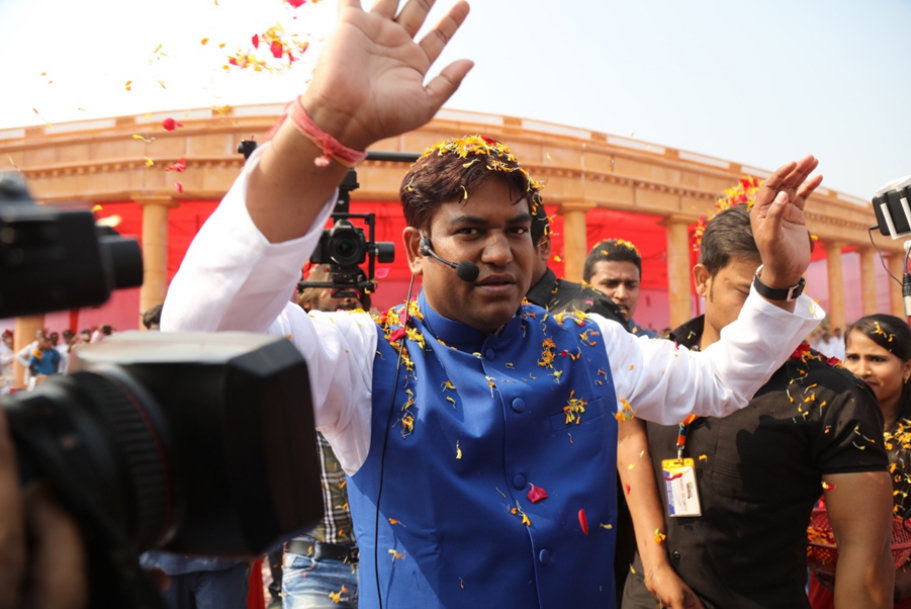
This arrival of yet another caste leader on Bihar’s crowded political landscape was being noticed by supporters and opponents alike. “Mukesh Sahni’s Nishad rally in Gandhi Maidan to launch his party was a great success last year” said a senior JD(U) leader in Patna, “Whatever his politics, you have to give it to him for gathering close to one lakh supporters from all over the state and filling up Gandhi Maidan”.
Mukesh Sahni’s VIP is the latest entrant to the club of regional caste-based parties which have been proliferating in India, especially in the Hindi heartland states of Uttar Pradesh and Bihar, ever since the implementation of the Mandal Commission recommendations for Other Backward Class (OBC) reservations was initiated in 1989. Known as the post-Mandal era in Indian politics, the period after 1990s has seen an upheaval of representative politics in the name of caste identity in which many caste groups have used their numerical strength to make claims on the state.
Lalu Yadav’s Rashtirya Janata Dal (Yadav and Muslim), Mulayam Singh Yadav’s Samajwadi Party (Yadav and Muslim), Nitish Kumar’s erstwhile Samata Party (Kurmi), Upendra Kushwaha’s Rashtriya Lok Samata Party (Kushwaha or Koeri), Ram Vilas Paswan’s Lok Janshakti Party (Paswan), Om Prakash Rajbhar’s Suheldev Bharatiya Samaj Party (Rajbhar), Sonelal Patel’s Apna Dal (Kurmi in eastern UP) and Jitan Ram Manjhi’s Hindustan Awam Morchaare (Musahar and Mahadalit) are all examples of this phenomenon in which different caste groups have come to assert their numerical presence and use their political presence to gain access to the resources of the state.
Some of these caste-based parties like RJD and SP have been able to successfully obtain and even monopolise power for a long time. However, other caste-based parties have largely been restricted to a few pockets of sub-regional influence where their caste populations are numerically dominant. The proliferation of caste-based parties at the regional level is due to the impact of caste on everyday politics -- from issues of dignity and honour, to access to resources, to control over regional political economy, and opportunities for employment and education (Witsoe 2013, 19). The emergence of party politics as a medium to further the agenda of social justice through democratic means is important, as pointed out by Witsoe, “lower-caste politics ...mobilised almost exclusively through political parties and pursued a one-pointed program focused on capturing state power”(Ibid.).
In the post-Mandal period in Bihar, upper backward castes like the Yadavs, Kurmi-Koeri, and Baniyas could effectively capture state power through increased representation. However a large section of the backward castes, represented by the EBCs was not able to do that. As Manish Jha rightly points out, “the marginality and humiliation experienced by a vast section of EBCs (derogatorily called panchapania) never got due attention because of neglect by mainstream political parties and their 'inability to claim identity politics’.” (Jha 2014, 125)
The rise of a demand for better political representation for the Nishad community, along with demands for reservation in jobs and education has to be seen in the context of this long pending “inability to claim identity politics’’. In fact, the metamorphosis of the Nishad Vikas Sangh into a political party for Nishads, the Vikassheel Insaan Party or VIP, also has to be seen in the context of a desire to see increased participation by the community in everyday politics and to have greater bargaining power for the community when negotiating with the state.
Despite the electoral drubbing it received in the Lok Sabha elections 2019 in which the VIP contested in three seats in Bihar but lost all three, it is important to understand and analyse the politics and aspirations that the VIP represents if one wants to understand the intersection of everyday politics and identity politics in India.
Between Numerical Strength and Political Weakness
The case of the Nishad community is interesting not only because it has a formidable numerical presence of approximately 8% of Bihar’s 10.3 crore people, but also because their population is spread widely across North Bihar and the Mithilanchal region (Singh 2019), across districts like Muzaffarpur, Darbhanga, Vaishali, Madhubani, Jhanjharpur, Supaul, Samastipur, Begusarai, Munger and Motihari. The community comprises almost 22 sub-castes like the Bind, Beldar, Chaiye, Tiyar, Khulwat, Surahiya, Godhi, Vanpar and Kevat and so on (Swaroop 2018). This combination of a strong numerical presence along with a geographical spread enables the community to project its influence in a large number of electoral constituencies across the state.
Largely a riverine caste with occupations dependent on rivers and water sources, the fortunes of the community have been affected as rivers have gone dry and water levels have depleted.
It is this numerical influence that the community now seeks to capitalise on and convert into political influence. “For too long we have been made to feel politically irrelevant, despite having a sizeable population in Bihar. We used to look up to other parties to give us tickets, to give us representation and to give us a voice. But now with the VIP, we have our own party and we can now give tickets to people” said Ashok Kumar Chauhan, the state president of VIP, when I met him in Muzaffarpur in the summer of 2019 while he was campaigning for Raj Bhushan Choudhary, a VIP candidate and a Nishad.
Largely a riverine caste with occupations dependent on rivers and water sources, the fortunes of the community have been affected as rivers have gone dry and water levels have depleted across the state. While these changes can be broadly seen as the impact of environmental change, the community is looking for a political solution to its problems.
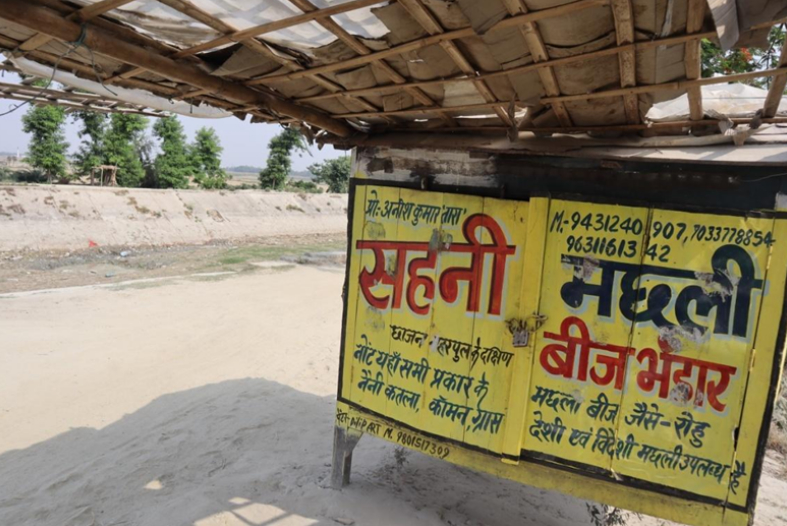
According to Mukesh Sahni, “Members of the Nishad community were once on a par with the Yadavs in terms of social and economic wellbeing. However, now look at us. The Nishads are always found at the bottom level of society. We are not only deprived but also marginalised. Much like the Yadavs, we are also vying for empowerment of our caste people and this will come from reservations and more political representation.”(Interview with Mukesh Sahni, May 1st, 2019, Muzaffarpur, Bihar).
The fact that the EBCs have not been successful enough in representative politics as compared to some of the dominant communities among the OBCs in the post-Mandal era has been well documented. Between 1990 and 2000, there were only 15 members of the Bihar legislative assembly from the Nishad community (Mallah – 7, Nonia – 4 and Kevat – 4) as compared to 365 MLAs from the backward castes (Yadav – 213, Kurmi – 37, Koeri – 67 and Baniya – 48), as pointed out by Srikant (2005: 37, 137). In fact, the political marginalisation of the community is even more glaring in the parliamentary elections. Between 1952 and 2004, there was only one Member of Parliament (MP) from the Mallah sub-caste, two from the Noniya sub-caste and two from the Nishad sub-caste.
Captain Jai Narain Prasad Nishad, the four-time MP from Muzaffarpur, is seen as the last big Nishad leader in the state. His son Ajay Nishad won the seat on a BJP ticket after his death in the 2014 Lok Sabha elections and repeated the feat in 2019, despite a dip in his popularity in the previous five years.
However, observers credit the victory to the Modi wave, which swung the seat in his favour in 2014 as well as in 2019. The emergence of the VIP and Mukesh Sahni’s relentless campaigning for his own party candidate in Muzaffarpur in 2019 had put BJP’s Ajay Nishad ill at ease. The very fact that Prime Minister Narendra Modi had to come down to Muzaffarpur for campaigning on 30 April and promise to constitute a separate ministry for fisheries is being seen as the impact of the VIP’s presence in the constituency (Singh 2019).
Mukesh Sahni: From Runaway Schoolboy to VIP
The story of a school dropout from a remote village in Darbhanga, North Bihar, who runs away to Mumbai at a very young age, only to return as a rich and extremely successful businessman is quite uncommon, even in the imaginations of Hindi movie scriptwriters. As I hopped onto the backseat of a Toyota Innova of Raju Sahni, one of Mukesh Sahni’s supporters, in Kurhani assembly segment of the Muzaffarpur Parliamentary constituency, I realise the impact that Mukesh Sahni’s story has had on his supporters and co-ethnics. Raju told me about how he started doing a menial job at a clothes’ manufacturing company and worked his way upwards to now owning three factories of jeans and cotton clothing. Claiming Mukesh Sahni to be his role model, he draws out the parallels in both his and his leader’s story. “Much like him I have also struggled to become what I am today and now that I have earned enough money, I want to contribute to the betterment of my community. I want to work for their empowerment and this can only come from having our own party and having our own voice”, Raju tells me, as we pass through the dirt tracks of Basauli panchayat in Kurhani block.
It is his own panchayat and as we pass through the entrance to the village, he points out the pond where he used to catch fish as a child. His excitement subsides and he turns reflective as he sees that the pond has completely dried up now. This is probably the reason why Raju, Mukesh and many other such young Mallahs are forced to flee to big cities like Mumbai and Delhi every day. Not everyone gets to return as the “Son of Mallah” though.
Branding himself as the “Son of Mallah”, Sahni's main objective behind organising big rallies was to assert his identity as a Mallah or Nishad and to instill a sense of pride in identity among members of his community.
Mukesh Sahni made his fortune in Mumbai in the film industry as a supplier of props for movie sets. While his set designing company, Mukesh Cinevision, was doing exceptionally well, Sahni had other political goals in mind. Returning to Bihar in 2008, he started out by organising social and religious events like the Chhath puja and Janmashtami celebrations, and sports tournaments for the youth. He even gave donations to temples and madrasas alike.
In 2008 Mukesh Sahni formed the Sahni Samaj Kalyan Sanstha, which organised these social and religious gatherings and started consolidating the Nishad community in Muzaffarpur, Darbhanga, Samastipur and Madhubani. As the consolidation efforts gathered steam and as more people from the Nishad community started showing interest in the activities of Sahni Samaj Kalyan Sanstha, Sahni’s organisation merged with the Nishad Vikas Sangh which had been founded in 1985. With Mukesh Sahni becoming the new president of the Nishad Vikas Sangh, this became the new platform for the representation of the Nishad community in Bihar.
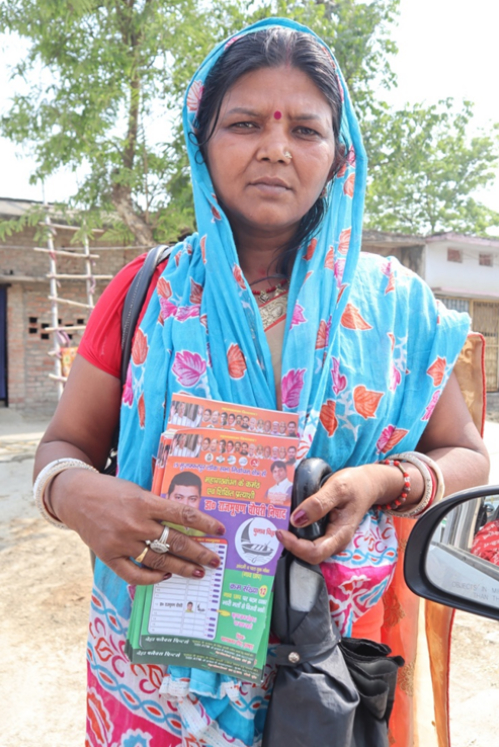
With the new organisation to back him and a sizeable presence of workers at the grass root level, Sahni’s Nishad Vikas Sangh shifted gears around 2013 and began aggressively mobilising the community across the state by organising rallies and meetings in all the district headquarters. Using a mix of bike rallies and a fancy rathyatra with a modified bus worth Rs 1.5 crore (Bhelari 2018) as his publicity vehicle, Sahni toured the state to connect with fellow Nishad community members and mobilise their support to move further towards achieving their political ambitions.
Branding himself as the “Son of Mallah”, Sahni's main objective behind organising big rallies was to assert his identity as a Mallah or Nishad and to instill a sense of pride in identity among members of his community. In an interview on 3 September 2015, Sahni had told me: “Rally matlab hota hai shakti, varchasva, power. Toh shakti dikhana hai taaki logon ke beech mein accha message jaye ki yeh jaat aaj bhi active hai ...aur yeh samaj ko koi daba nahi sakta hai” (Rally means power, unchallenged and absolute power. We have to show power in order to send a positive message among our people that our community is also active. Nobody can suppress us anymore).
In the 2015 assembly elections, Mukesh Sahni, joined the National Democratic Alliance (NDA), and became a star campaigner, hopping across the state in helicopter along with top BJP leaders like Amit Shah, Rajnath Singh and Sushil Modi. From full page colour advertisements in all the prominent dailies in Patna to huge billboards across the city, Mukesh Sahni’s face was prominently featured, although he was not contesting the elections. The NDA lost the assembly elections in 2015 to the Mahagathbandhan or Grand Alliance of Lalu Yadav and Nitish Kumar, but Sahni was seen as effective in transferring a major chunk of the EBC vote to the BJP in many seats in which the Nishad community was numerically strong.
However, by 2017 Sahni had withdrawn from the NDA, blaming the BJP for not being serious about the inclusion of the Nishads in the SC or ST category. Immediately after the violent disruption of the Nishad Vikas Sangh’s padyatra in Patna on 4 September 2015, the Nitish Kumar government in power granted ST status to the Mallah, Noniya and Nishad castes (including many sub-castes like the Bind, Kevat, Beldar, Godhi, etc.). However, the state government’s request was turned down by the Union home ministry which asked the Bihar state government to justify this announcement by producing an ethnographic report of the community’s socio-economic conditions.
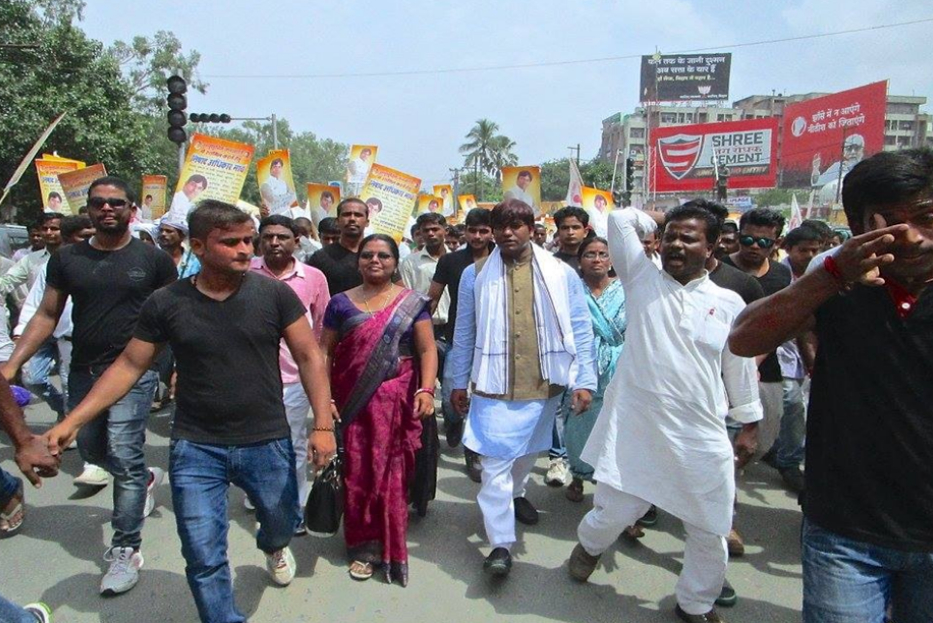
Blaming both the Modi government at the centre and Nitish Kumar government at the state level for dilly-dallying on the reservation question, Mukesh Sahni decided to throw his lot with the Mahagathbandhan led by the RJD for the 2019 Lok Sabha elections. Earlier there had been a major change in Bihar’s tumultuous political landscape as Chief Minister Nitish Kumar broke away from the RJD-led Grand Alliance and joined the NDA. The RJD meanwhile became the chief opposition party with Tejaswi Yadav, Lalu Yadav’s youngest son, switching from the Deputy Chief Minister’s post to that of opposition leader in the state assembly.
"[T]ravelling by a helicopter ensures that we have power. If God has blessed me with the ability to do this, I will use that ability to introduce my community to the helicopter."
In 2019, the RJD alliance or Mahagathbandhan comprised Mukesh Sahni’s VIP, Jitan Ram Manjhi’s HAM, Kushwaha’s RLSP and the Congress. Despite launching the party only in November 2018, Sahni still managed to get three MP tickets for his VIP. While many saw this as a lack of coordination in the ticket distribution process by the Mahagathbandhan, there are others who credit Mukesh Sahni for successfully “clinching” the elusive political representation for the Nishad community.
Although the VIP did not taste electoral success on its first outing, going by media reports and listening to voices from the ground it appears that Nishad voters rallied in large numbers to mobilise support for their caste leader and new caste party (Singh 2019, Swaroop 2018).
Making and Unmaking of the VIP
As one arrives at the top floor of Patna’s Fazal Imam Complex on Frazer Road, it does not look like one has entered the office of a political party. If one has been to the kind of party offices which populate the nearby Veerchand Patel Marg including those of the RJD, JD(U), BJP and CPI, the VIP party office on Frazer Road will remind you of any corporate office in suburban Mumbai with neat cubicles and glass cabins. But for the huge posters of the “Son of Mallah” and a dedicated section for media briefings with the party symbol of a boat neatly placed in the background, the office can easily be passed off as a call centre in any urban metropolis in India.
Inside one of the cabins, seated on a high-backed chair is Mukesh Sahni, a much subdued and simpler version of his earlier self. Clad in a simple white kurta pyjama and a green scarf (gamcha) around his neck, Sahni now completely fits the image of a politician. The blonde highlights have given way to a sober hairstyle and the flashy gold jewellery has also been done away with. The earring on the right ear remains, but it is subtle when compared to the earlier bling. Sahni, as the head of Bihar’s newest political party is quite a contrast from his earlier self. “Rajneeti mein aane ke baad kaafi badlav hota hai”(Many things change after entering politics), he admits, “We are expected to be among the people all the time and serve them, so we need to look approachable” (Interview April 2019).
The white kurta and green gamcha has become his signature dress or his political costume, if one can say so, as he criss-crosses the state once again on helicopters, only this time for the RJD-led Mahagathbandhan’s election campaign. Although the flashiness has receded at the individual level after a formal entry into politics, Sahni’s fixation with the helicopter has not ebbed. In 2015, when he became popular for his campaign and outreach across the state via his personal helicopter, Sahni had told me in an interview in August that year, “Helicopter se jaane se nishchit hai ki humare paas power dikhta hai. Ek gareeb samaj se bhi helicopter se ghuma jaa sakta hai ...samaj ke beech mein ek acche level mein rehna hai. Upar waale ne diya hai toh hum log apne sama jmein helicopter se ghumenge.” (Travelling by a helicopter ensures that we have power. If one poor person can also move around by helicopter then it gives a positive message in the community. If God has blessed me with the ability to do this, I will use that ability to introduce my community to the helicopter).
The importance of a helicopter becomes clear at rally grounds in rural Bihar during the election campaign, as one often encounters crowd assembling at two points - one facing the stage waiting for the main speakers to come while the local leaders make use of the microphones, and the other section of the crowd facing the temporary helipad where the helicopter is supposed to land. Every time Sahni hops on to the helicopter and disembarks from it, his identity as a “leader” of the community who is important and who can lead the community gets reinforced among the onlookers. For a community which has been politically marginalised and socio-economically backward for a long time, an assurance of a leader for the community is a sense of achievement in itself. And if such a leader asserts his leadership through various means of showing access to power, helicopters being a case in point, this has an impact among the masses.
“[T]he name VIP gives a feeling of being someone important, it gives the feeling that yes we matter and that we are also strong.”
This way of connecting to the rural masses has been used quite successfully earlier as well, by none other than Lalu Yadav, who as a chief minister would make unscheduled landings of his helicopter just to give a glimpse of the flying machine to poor villagers, who would be amazed and equally bewildered by a helicopter landing in the middle of an empty farm. While Sahni lacks the charismatic appeal and the oratory skills that Lalu Yadav used to have, his constant attempts to reinvent ways and means to take power down to the Nishad community are important steps in the political mobilisation of the community.
The choice of a name for the party which yields the acronym “VIP” is one such way, in which power is experienced and conveyed. Sahni believes that “the name VIP gives a feeling of being someone important, it gives the feeling that yes we matter and that we are also strong.”
“I have been in active politics for the past 12 years and have also been a zila parishad member. Earlier I was with the LJP, but there our community did not get the respect that it deserves” says Veena Devi, a VIP Mahila Morcha member from Khagariya, the parliamentary constituency from where Mukesh Sahni contested the Lok Sabha elections. Devi was in Muzaffarpur to campaign in the fourth phase of elections in support of the VIP candidate there. She added further, “With VIP we have finally got our confidence and we have got our voice. This is our own party and we do not have to depend on the mercy of other parties or other leaders.”
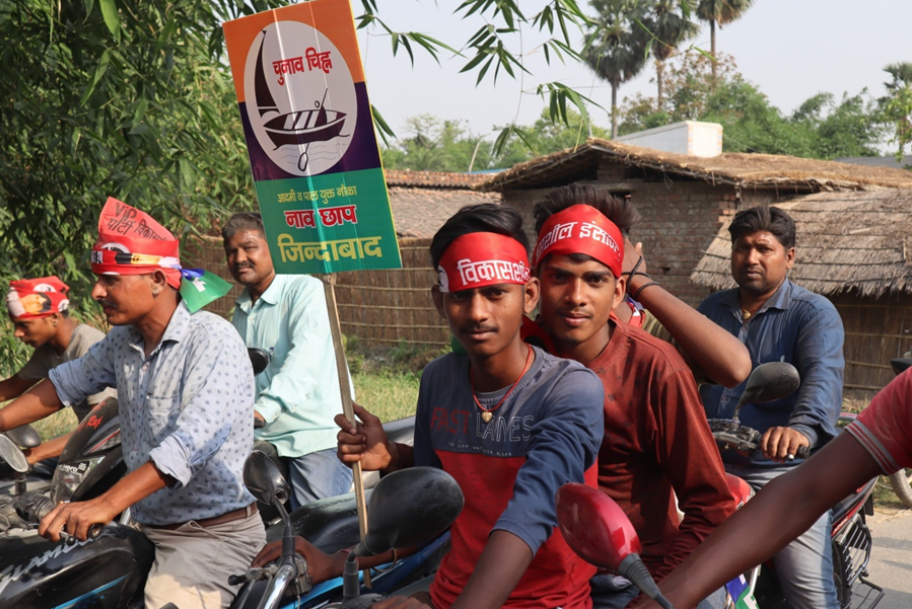
While motivated political workers like Veena Devi give one an idea of the mobilising power of “identity” in electoral politics, at the same time they also draw one’s attention to another important factor needed for a successful foray into electoral politics: party organisation. As I went about in the campaign cavalcade of the VIP candidate in Muzaffarpur, Raj Bhushan Choudhary Nishad, hopping from one panchayat to other in Kurhani block, the lack of organisation in the campaign became evident. From confusion in the route charts to cars going in circles along the same roads, to missing some crucial stopping points where they were supposed to meet small groups of people, the chaos was startling. In the day and age of highly professionalized campaigns organised with the precision of a professional event management (Bagchi 2015), as shown by the BJP, such hastily put together campaigns are a disappointment.
The fact that essentially the same set of people, core to the party’s organisation was trying to be present in all the three constituencies that VIP contested from, indicated the lack of organisational manpower. On a par with, if not more than, the difficulty of finding adequate manpower for the campaign team was the difficulty of finding suitable candidates to contest in the three seats that the party bargained for and obtained.
Raj Bhushan Choudhary Nishad, the party vice president and candidate from Muzaffarpur is a resident of Rosada, Samastipur, and owns and runs a big private hospital there. Mukesh Sahni, the party president, who contested from Khagaria, belongs to Darbhanga, a seat which has a sizeable population of the Nishad community, but the VIP had to concede that seat to the RJD, which fielded former finance minister, Abdul Bari Siddiqui from there. The third candidate, from Madhubani, Badri Purbe, was a last-minute import from RJD and was not from the Nishad community either. None of the candidates fielded by the party were local residents of the constituencies from which they contested.
“We did not have the right candidates. Our people have been suppressed for long and there are not many who can bear or manage the costs of running an MP campaign, leave alone show leadership skills. So, it is a tough task to find suitable candidates for the party”, reasoned Sahni, when I inquired about the anomaly in ticket distribution. Not surprisingly, the electorate’s response to such “imported candidates” by a caste-based party was unambiguous.
Badri Purbe could manage only 14.6% of the votes in Madhubani, as against Mukesh Sahni’s 27% in Khagaria and Raj Bhushan Choudhary’s 24% in Muzaffarpur. Lack of organisational power and non-availability of good candidates from within the community were the two factors that could be seen as primary reasons for the party’s electoral defeat in 2019.
Conclusions
As Mukesh Sahni addresses a motley group of party workers, late at night in the campaign office near Muzaffarpur’s zero mile, the emphasis is very clear. “Take this as a struggle for existence (wajood ki ladai). If we do not make good use of this opportunity, no big party will trust us again and our fight for representation will go in vain. We have to fight this election, thinking of the upcoming assembly election next year. We have to connect with as many voters as possible”, Mukesh Sahni told his workers, as he divided them swiftly into groups for campaigning in the urban wards of the city, on the penultimate day before polling in May 2019. Party workers seemed to be enthused by their leader’s direct speak, and Sahni, who is not the best of public speakers from mega rally platforms, was very effective in conveying his point across when in small groups.
While one can call the VIP a party bereft of any ideological moorings, the party leader clearly has a pragmatic approach when it comes to working towards his objective of achieving power. “Our community is considered to be slightly aggressive. So men from the Nishad community often tend to get embroiled in fights and disputes. If we are powerless we cannot negotiate with the police that much. In order to negotiate with the police, we need to be in positions of power. Once an MP or an MLA calls, the police will not dare to arrest our community people”, says Sahni.
The experience of everyday life in the village society lies at the heart of how a large part of the rural society looks at the state. An unfriendly police and an unresponsive bureaucracy are often the only things that much of the rural population is able to witness. The idea of having an “apna aadmi” in power is thus seen as a solution to make this everyday experience with the state better. While on the one hand, the pragmatism on display helps Sahni to connect well with his cadre, the lack of an ideological grounding and a long-term goal beyond obtaining reservations or representation also proves to be his major shortcoming with organisation building. The adhesive of an ideology or a long-term ideal that each political party promises to attract and hold cadre seems to evade the grasp of Mukesh Sahni and his VIP as of now.
The rise of identity politics in India’s electoral space has often been seen as having an adverse effect on programmatic politics and governance. However, as seen from the experience of Bihar, in matters of everyday politics, dignity and honour that are manifested in myriad ways, such representation or having an apna aadmi in power also matters. It was because of such demands for dignity and a need to find one’s representational voice in the sphere of politics, that the slogan “vikas nahi sammaan chahiye” (we don’t want development, we want dignity) came to define the 1990s when the rise of backward caste politics was at its peak in Bihar.
While dominant communities manage to get easy access to mainstream politics via caste-specific or interest-specific political parties like the Marathas do through the Nationalist Congress Party in Maharashtra, the Jat Sikhs through the Shiromani Akali Dal in Punjab, the Vokkaligas through Janata Dal (Secular) in Karnataka or even the Yadavs through the RJD in Bihar, such mainstream political legitimacy is difficult for the small-time caste-based parties to attain. Most often they are seen as enterprises for advancement of the selfish interests of the leaders of such parties.
As sociologist Surinder Jodhka puts it, “The small parties offer a political market, they have a supply of votes and there are people who buy it. They are pragmatic and usually don’t adopt any ideological position. Identity politics is all about representation for them” (quoted in Jha and Nair, 2019). Given its history of switching sides from the BJP-led NDA in the 2015 assembly elections to the RJD-led Mahagathbandhan in the 2019 parliamentary polls, one cannot say with utmost certainty that the new VIP led by Mukesh Sahni will be any different.
However, it is certain that the voices that it promises to amplify and the power of representation it promises to give the Nishad community is what gives the feeling of being “Very Important People”. The story of the making of the VIP is therefore important in understanding both the positive and negative sides of such phenomena in Indian politics. Going beyond the vote share and number of seats a caste-based Identity driven party manages to secure in elections, such a story is important for understanding the performative aspects of politics and for understanding the complex phenomena of how politicians reach out to voters. It also helps us in understanding how such small-time caste-based parties continue to operate as drivers of democracy in an increasingly majoritarian polity.


